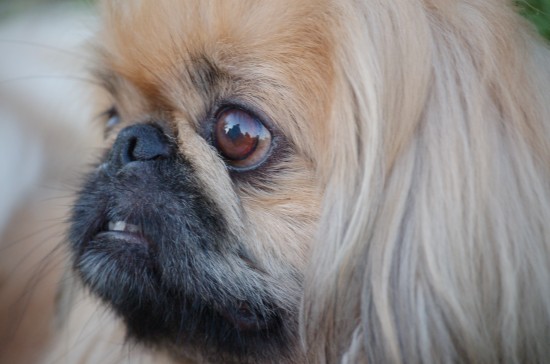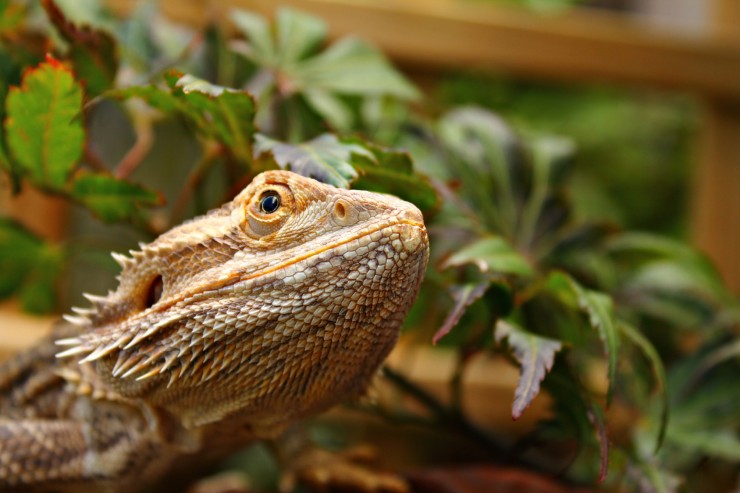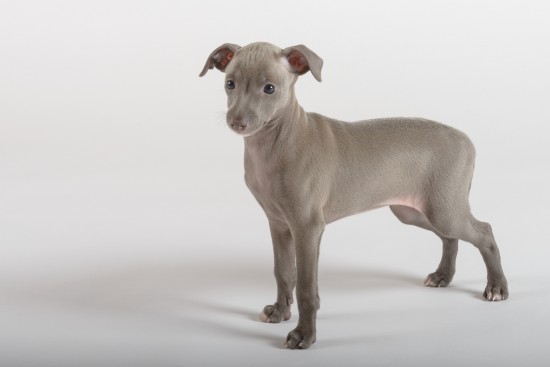

The Pekingese or “Peke” is a breed of toy dog (one that is diminutive in size) that originated in China. It is also sometimes known as the Lion Dog, due to its similarity in appearance to the statue ‘guardian lions’ popular in China. The Pekingese has a long and noble history as a companion of Buddhist monks and Chinese royalty, and also enjoys considerable popularity in the rest of the world. With its distinctive appearance and signature long, silky coat and flattened face, the Pekingese is unmistakable, but also requires rather more thoughtfulness and consideration to be put into its care and wellbeing than most other dogs, for the same reason. If you own a Pekingese dog or are considering buying one, read on to learn more about the health, care requirements and general wellness of these appealing little dogs.
The Pekingese has a long coat that sheds and renews itself in large quantities, and requires a reasonable amount of care and attention to keep it healthy. They require daily brushing and grooming, and regular trips to the grooming parlour every couple of months for a bath and a trim. Because their coats are long and relatively heavy, the Pekingese can easily overheat in hot weather, and it is important to keep them cool in order to avoid heatstroke.
The facial folds of the Pekingese require regular cleaning and drying to avoid a build up of dirt and shed skin cells that can lead to sores and infections. They can also be prone to collecting dirty fur around the bottom, which requires regular cleaning too!
The Pekingese dog is on average considered to have a medium-length lifespan, with the UK Kennel Club citing an average figure of 11.4 years as the lifespan of the breed.
The overall main causes of death in the Pekingese are reported to be problems with the major organs in later life, such as neurological problems or congestive heart failure. The presence of a heart murmur can be an early indication of a heart problem developing, which can be medicated to extend the healthy life expectancy of the dog. However, it can be hard to tell if a heart murmur is present until the dog is already in middle age, as murmurs in the Pekingese dog don’t generally become apparent until the dog is six or seven years old.
The head and skull of the Pekingese are comparatively small, and their shortened muzzle and flattened face can lead to a range of breathing difficulties such as snoring and noisy breathing, as well as making it difficult for this little dog to keep itself cool. In pronounced cases of breathing difficulties when the muzzle is very short and the nasal passages very narrow, surgical intervention may be required to ensure that the dog can breathe comfortably.
Again due to their short muzzles and small heads, the Pekingese is more susceptible than most dogs to a range of potential eye problems. They may develop sores and ulcers upon the eyes without warning, and are particularly vulnerable to the effects of knocks, bumps or traumas that affect the eyes.
Dry eye, or Keratoconjunctivitis sicca is another condition that the Pekingese is particularly prone to, a condition where the tear ducts break down and are unable to produce enough moisture to keep the eyes comfortably lubricated.
Progressive retinal atrophy or PRA is another condition of the eye that affects the Peke, leading to a gradual and irreversible blindness in the dog that cannot be prevented or corrected. PRA is a genetically inherited condition, and one that breeders sometimes test their own stock for before selecting them for breeding.
The Pekingese has a relatively long back compared to their legs, which can make them prone to weaknesses of the back and injuries from careless handling. As the Pekingese is a toy dog, it is commonly picked up and carried around by its owners, and should always be handled with care. When lifting up a Pekingese dog, it should be supported under the chest and abdomen, rather than lifted up around the middle. Due to their relatively short legs, Pekingese dogs sometimes have difficulty walking up steep or high stairs, and may need to be carried to avoid risk of back strain.
The Pekingese dog was one of the breeds negatively highlighted in the BBC documentary Pedigree Dogs Exposed, with a Pekingese dog that won the prestigious Best in Show title in 2003 being found to suffer from arrange of health problems that should have negated its chances of being classed as a good example of the breed. This placed the Pekingese dog under the spotlight; specifically, how the breed standards encouraged by The Kennel Club were concerned more with appearance than the health, wellness and longevity of the dogs.
In response to the programme airing, The Kennel Club has made amendments to its breed standards for the Pekingese dog, stating that “the muzzle must be evident,” meaning that very flat faced dogs, those most likely to suffer from breathing problems, would not be allowed to compete or win shows.
If you are considering buying a Pekingese dog, make sure that you are prepared to look after them for the duration of their lives, and know what you are getting into! When considering puppies, find out about the health and wellness of the parent dogs, and check that you are not considering a dog with a dramatically shortened muzzle, which will place them at greater risk of developing breathing and respiratory problems that can be hard to correct.
 Essential Questions To Ask A Dog Breeder
Essential Questio
Essential Questions To Ask A Dog Breeder
Essential Questio
 Six Hidden Dangers That May Be Lurking In Your Reptile Terrarium
Six Hidden Danger
Six Hidden Dangers That May Be Lurking In Your Reptile Terrarium
Six Hidden Danger
 Reliable Chicken Coops offered with A Dynamic Range of Choices
Reliable Chicken Coops offered with A Dynamic Range of Cho
Reliable Chicken Coops offered with A Dynamic Range of Choices
Reliable Chicken Coops offered with A Dynamic Range of Cho
 Teaching Your Puppy To Sleep Through The Night
Teaching Your Pup
Teaching Your Puppy To Sleep Through The Night
Teaching Your Pup
 Owning An Italian Greyhound
Owning An Italian
Owning An Italian Greyhound
Owning An Italian
Copyright © 2005-2016 Pet Information All Rights Reserved
Contact us: www162date@outlook.com